
Monthly Archives: March 2011
10 Signs It’s Time To Quit Your Job
Written by Wise Bread
Chances are if you are lucky enough to have a job, the thought of quitting sounds ridiculous. With the unemployment rate at an all time high, most people are thanking their lucky stars to be employed.
But even in a bad economy some jobs are just not worth it. Are there any telltale signs you should be looking for when trying to decide if you throw in the towel? Here are ten signs to look for to determine if it’s time to find a new job:
1. You Aren’t Learning Anything New
Yes, you want to know how to do most of your job. But there are also things you want to be learning; otherwise you are not growing professionally. If you have stopped learning at work, it’s time to find a job where you will learn new skills and grow professionally.
2. You Never Have a Day When You Wake Up Excited To Go To Work
If you wake up every morning Monday through Friday and never feel excited to go to work, that is a problem. It means you aren’t enjoying your job and it is diminishing your quality of life. If you wake up every day and dread going to work, it’s time to consider quitting your job.
3. You Spend More Time Surfing the Web Than Doing Your Job
When you are at work, you are supposed to be productive. Otherwise, it’s a waste of your time and the company’s money. If you are bored and surfing the web most of your work day, you may want to think about looking into job options where you’ll get more stimulation and responsibilities.
4. You Don’t Like Most of Your Coworkers
There are always one or two coworkers in the office that most people can’t stand. But if you don’t like most of your coworkers, chances are your days aren’t very enjoyable because you have to work with them day in and day out. If you can’t stand most of your coworkers, it’s time to think about finding a company whose employees you mesh with better.
5. You Aren’t Making Enough Money to Pay Your Bills
If you are working your butt off and not getting paid enough to pay your bills, you might be overqualified and underpaid for your position. Go find a job that pays what you deserve.
6. You Spend Time Looking For Other Jobs
If you are spending time looking for other jobs while you are on the clock, it’s obvious you want to leave your job. So keep looking for new jobs and as soon as you find a good one, take it and run.
7. You Haven’t Gotten a Raise in the Last Two Years
If you work hard and benefit the company you work for, you deserve to be rewarded for that. If your boss hasn’t given you a raise in the last two years, ask for one. If he or she says no, get out now.
8. Your Boss Sucks
Sometimes bosses suck. But if your boss sucks all the time and takes advantage of your time, it’s time to find a new job.
9. The Company Isn’t Doing Well
This sign varies from company to company. You must keep in mind that we are in a recession and if sales are down but the company isn’t in jeopardy, this sign may not apply to you. However, if business is down to the point where it looks like the company is going to go under, start looking for a new job NOW!
10. You are Stressed All the Time
You are supposed to enjoy life, not be stressed out all the time. If you spend most of your days stressed about everything that going on at work, you are not at the right job.
Know any other signs that you should quit your job that weren’t listed above? Share them with us in the comments section!
Ashley Jacobs is the college correspondent for personal finance blog Wise Bread . Follow her latest tweets on @CollegeCents.
Bonus:Long Day…

How they did it back in 1839

Angry Birds: The Movie
Tech support…LIKE A BOSS
Written by notalwaysright
(I work engineering support late in the evening.)
Me: “Pennsylvania Support Center. How may I help you?”
Caller: “The cleaning crew just came through my office, and now my mouse doesn’t work. The cursor just jumps all over the screen randomly when I move it. They broke my mouse. I need a new one.”
Me: “You have a SPARCstation with an optical mouse, correct?”
Caller: “Yes, with the cool glass mouse-pad.”
(Old-school optical mice used to require special reflective mouse-pads with grids etched into their surfaces. To increase tracking resolution, the vertical and horizontal grids had slightly different spacing.)
Me: “Did the cleaning crew wipe down your desk?”
Caller: “Yes.”
Me: “Did they move your mouse-pad?”
Caller: “What does that have to do with anything?”
Me: “Did your mouse-pad get rotated? Is the long edge of the mouse-pad now parallel to the edge of your desk?”
Caller: “I really don’t see why that’s relevant. I just want a new mouse!”
Me: “The orientation of the mouse-pad matters. The–”
(The caller cuts me off and starts to yell. I realize that I can actually hear his voice coming from down the hall.)
Caller: “Listen! Just open a ticket and have someone bring me a new mouse. I don’t have time for this. I design chips, so I know what I’m talking about. I probably designed the chip in the phone you’re stuck answering all day!”
(I take off my headset, walk down the hall, and walk into his office up to his desk.)
Caller: “…so don’t try to bulls*** me with, oh. Hold on, someone is in my office.”
(I reach down, and rotate his mouse-pad 90 degrees. I move the mouse, and the cursor happily moves around the screen as expected. I walk out of his office, back down the hall, sit down at my desk, and put my headset back on.)
Caller: *silence*
Me: “Thank you for calling Pennsylvania Support Center. I trust I have resolved your case.”
Caller: *silence*
Me: “You will be receiving your ticket number via email. Thank you.”
Caller: *click*
Bonus?Tech support…LIKE A BOSS

Four Stages of Life…

10 Things You Can Do to Prepare for Economic Collapse
Written by GERRI
The End is Nigh, and we’re not just talking about Glenn Beck’s ratings. Some economists are saying that the US has passed the point of no return with its economy, which means economic collapse is as inevitable as Charlie Sheen’s future apologies. There’s lots you’ll need to do before hunkering down in your zombie-proof bunker to prepare for the end. Get a jump on this now before society breaks down and look on the bright side: at least you won’t have to go to work anymore.
Buy Guns

You can’t fight zombies or your neighbors for those last Twinkies at the 7-11 without good weapons. Remember that handguns maybe easy to carry, but if you really want to put down a looter or that rotten neighbor of yours, a handgun should only be used for the trip upstairs to get your rifle or shotgun. And speaking of shotguns, bullets will be quite the commodity when the end comes, so make sure you also have a shotgun shell press. But remember, don’t start shooting people until after the apocalypse. If you get a bed holster, make sure your sheets don’t tangle or you could blow off your own foot.
Hoard Water

Oh, sure water comes right out of your sink…now. But is it really paranoid to think that government might shut off the flow and try to control our brains with rap music? Whether the economic end comes due to natural disaster, the next World War or Goldman Sachs betting that it will happen, the human body can survive weeks without food, but only days without water. Do like Viggo in The Road, when you see the flash, turn on the faucet.
Hoard Food

Until you figure out how to grow your own food or enslave the rest of the survivors, you’ll need a well-stocked pantry. Commodities, especially food, will skyrocket during the coming World Wide Depression, so extra food will also be handy to barter with. Remember that girl in high school who turned you down for the prom? You’ll be amazed what she’ll do for a can of peaches in the coming economic collapse.
Buy Land You Can Farm On

Having a well-protected chunk of real estate that you can grow food on is going to be very important. Make sure it has a fence to keep out the riff-raff, C.H.U.D.S. and wasteland mutantsyou’ll probably have to fight. The good news is, after the government collapses, you won’t have to pay property taxes on it.
Convert Your Car to Vegetable Oil

You think gas is high now? Wait until the seas dry up and the US strategic reserves are diverted to keep the limos running that shuttle Barack Obama and the Congress around. By converting your car to run on vegetable oil, not only will your car’s exhaust smell like French Fries, you’ll be guaranteed fuel. In America, we fatties never run out of greasy things to cook our food in!
Buy Gold

Gold has been steadily rising as the dollar has continued to plummet. In the dark days ahead, a shiny gold bar could make you the only financially solvent warlord on your block. Gold always holds its value, unless it’s molded in the shape of tacky jewelry worn by the cast of the Jersey Shore. Sadly, anything that touches Snooki must be thrown away.
Learn to Hunt

After the first few months of the collapse, store shelves are likely to be empty or choked with the shambling corpses of the living dead. Meat is going to be at a premium and you’re going to have to learn to shoot. The deer aren’t just going to stand there while you drizzle barbecue sauce on them. And remember, if your neighbor says you look “juicy”, be careful. He may be sizing you up for a casserole.
Keep a Low Profile

Bragging to your neighbors about your secret stash of gold, guns, ammo and Survival Seedssends one clear message to your neighbor: Kill you and he’s set for the apocalypse. You’ll last a lot longer in the coming Hellscape if the locals think you’re just as screwed as them. Conserve your food, don’t put on any weight and don’t attend any town militia meetings reeking of chocolate and cheese. Orange Doritos hands are a dead giveaway too.
Make and Keep Lots of Friends

You are going to need allies when the world goes back to bartering. If you’re known as the “town jerk”, change your attitude now before the meteor hits. Your neighbors will have skills that you can all use. The local stoner knows how to grow plants, even inside with hydroponics. Your friend the cop probably has plenty of extra ammo. And your overweight friend that ran the pizza shop? He’ll make an excellent zombie decoy while you run away.
Start Your Own Religion

If you want Godlike power, make yourself one! There’s no easier way to motivate your minionsthan to promise them something after they’re dead. Who needs money? When you got this kind of power, you can decide what money is! And, when people use faith over logic, you can pretty much tell them to do anything.
Bonus:Will Hunting had it right 14 years ago
15 places kids should see by age 15
Written by Nicole Frehsee
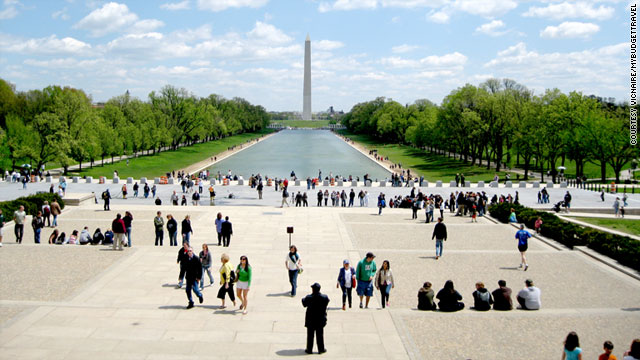
View of the National Mall from the Lincoln Memorial.
It took us hours of heated debate, weeks of research, and years of experience to whittle down America’s monuments to a definitive list of 15 musts for anyone under 15. Not only are these attractions fun and (shhhh) educational, they’re especially magical through the eyes of a child.
Two years ago, Budget Travel picked 15 American landmarks every kid should see, from Ellis Island to Redwood National Park. The new and improved 2011 lineup takes that challenge even further, by highlighting how our country’s top sights cater to kids’ abbreviated attention spans. From roasting marshmallows around a campfire to playing dress-up at Monticello, these cool, interactive activities ensure that the younger set will enjoy these must-see spots as much as their parents do.
1. Grand Canyon – Arizona

One of the gorgeous sunset views of the Grand Canyon you can take in while on a horse-drawn wagon ride.
(Courtesy Tobias Alt/Wikimedia Commons)
During the day, stroll the 4-year-old Skywalk, a U-shaped, glass-bottom observation deck that juts 70 feet over the canyon’s West Rim and sits 4,000 feet above the Colorado River. Come sunset, hit Grand Canyon Apache Stables, where, for $25.50 per person, you can hitch a one-hour ride on a horse-drawn wagon that ends around a campfire. Tip: BYO marshmallows and hot dogs so you can cook up a nighttime snack. Skywalk Package including mandatory Legacy pass. Kids 3–11, $57.49; Adults, $73.grandcanyonskywalk.com Grand Canyon Apache Stables: $25.50, kids 8 and up, apachestables.com/
2. Redwood National Park – California

Hidden Beach in Redwood National Park, California, is accessible via trail from the Trees of Mystery in Klamath.
(Courtesy Wikimedia Commons)
Ancient, sky-high sequoias aren’t the only attraction in this lush California locale — there’s cool aquatic life, too. Take a guided tide pool tour, where budding biologists can scramble between the coastal forest’s rocks while hunting for underwater creatures such as orange and purple ochre sea stars and sprawling, green anemones. Free tide pool tours are offered during the summer through Redwood National Park; check website for exact schedule.nps.gov
3. Monticello – Virginia

An autumn view of Thomas Jefferson’s Monticello estate.
(Courtesy Monticello/Robert C. Lautman)
The dreaded “look but don’t touch” rule means nothing at the Griffin Discovery Room, which opened on the grounds of Thomas Jefferson’s Monticello estate in 2009. Nothing is off-limits in the space, which features replicas of the third president’s possessions, from his alcove bed to his polygraph machine. Even his closet is fair game: Kids can try on clothes modeled after his 18th-century wardrobe. The Griffin Discovery Room is part of Monticello’s House and Grounds tour. Adults, $17 (low season), $22 (high season); Kids 6-11, $8 (year-round). monticello.org
4. The Freedom Trail – Massachusetts

With 125 shops and 21 restaurants, Faneuil Hall makes the Freedom Trail both lively and educational.
(Courtesy Greater Boston CVB)
Who needs a social studies book when you can learn about Colonial history from an 18th-century ship captain while parading around Boston’s waterfront? The 90-minute Pirates and Patriots tour, led by an actor in 1770s naval garb, focuses on maritime history and introduces the scrappy, ship-raiding characters that inhabited the city’s North End during the Revolutionary era.
Stops include the aptly named Long Wharf, once the longest in the world and the epicenter of Boston’s colonial shipping industry, and Griffin’s Wharf, site of the 1773 Boston Tea Party. Bonus: Some tour guides are known to hand out vintage goodies, so you might walk away with a fistful of colonial money or musket balls. The Freedom Trail’s Pirates & Patriots Tour runs from June to Nov. Adults, $12; kids 6–12, $7. thefreedomtrail.org
5. Niagara Falls – New York

View of Niagra Falls.
(Courtesy jcjlkrebs/myBudgetTravel)
Sure, your grandparents honeymooned there, but the majestic waterfalls straddling the U.S.-Canada border are worth a 21st-century trip. Ever wonder what it’s like to be a rubber ducky in a massive bathtub? Sign up for the Cave of the Winds tour, which begins after you change into a complimentary yellow poncho and sandals (trust us, you’ll need ’em).
After riding an elevator 175 feet down into the Niagara Gorge, you’ll stand on the Hurricane Deck, where you’ll be drenched by the tropical-storm-like spray from the 181-foot Bridal Veil Falls, where the water falls at a rate of up to 68 mph. Cave of the Winds operates May 1–Oct. 25. Adults, $11; kids 6–12, $8; 5 and under, free. niagarafallsstatepark.com
6. The National Mall – Washington, D.C.

The Capitol Building: Just one of the many sights to see on an amphibious tour of Washington, D.C.
(Courtesy jorgeq/myBudgetTravel)
Riding the streets of Washington, D.C., in a boat on wheels might sound cheesy, but cruising the Potomac River in one is pretty sweet. Set in a WWII-era amphibious vehicle, the 90-minute D.C. duck tour covers both land and sea.
The first leg hits the history-packed National Mall — look for the 19-foot-tall Lincoln Memorial, the Capitol building, and the Smithsonian museums — and then switches to a scenic river trip. Highlight: The boat pauses at Gravelly Point, a park located just a few hundred feet from the runway at D.C.’s Reagan National Airport, so you can watch roaring planes take off and land. D.C. duck tours cost $31.50 for adults, and $16.20 for kids 11 and under. trustedtours.com
7. Williamsburg – Virginia
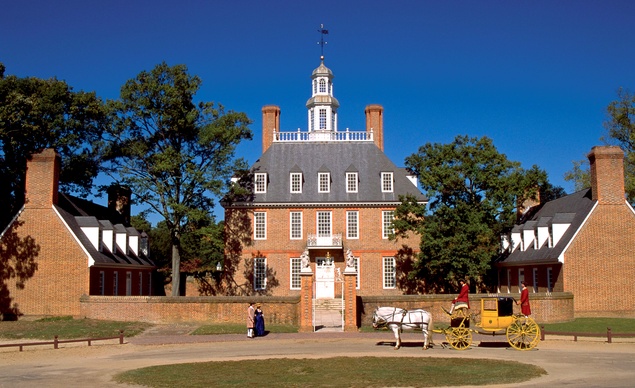
The Governor’s Palace at Colonial Williamsburg.
(Courtesy The Colonial Williamsburg Foundation)
Everyone in this living-history site likes to play dress-up, and visitors are no exception. At the Great Hopes Plantation — a re-creation of the town’s original 1700s farm — a stash of old-timey accessories await, from tricorne (three-pointed) hats for boys and shifts and mop caps (bonnets) for girls.
The costumes come in handy in the field, where kids can perform 18th-century household chores, such as picking bugs off potato crops, fetching water from the well, or hoeing the soil, that are likely to make clearing the dinner dishes seem like a breeze by comparison. Great Hopes Plantation can be accessed through regular admission tickets. Spring prices: adults, $37.95; kids 6–17, $18.95; 5 and under, free. history.org
8. Walt Disney World Resort – Florida

The Walter E. Disney’s red coaches wait at Main Street USA Station.
(Courtesy Tom Arthur/Wikimedia Commons)
Taking a family vacation to the world’s largest, most popular theme park is a no-brainer, and just-opened exhibits give even more reasons to visit Mickey & Co. Our pick: the Wild Africa Trek, a private, three-hour safari featuring live Nile crocs, statuesque giraffes, and lazy hippos.
Strap into a harness and you can even dangle 10 feet above the crocodiles’ heads. (The attraction is open to kids 8 and up.) Mid-jungle trek, the safari car (imagine an open-air Jeep that allows for standing) will stop on the trail for a traditional African lunch. Wild Africa Treks begin at $189 per person, including lunch, but not including admission to Disney’s Animal Kingdom.disneyworld.disney.go.com
9. Independence Hall – Pennsylvania

Take Philidelphia’s Ghost Tour and get to know the spirits of America’s founding fathers during a candlelit tour through landmarks like Independence Hall, pictured here.
(Courtesy Dan Smith/Wikimedia Commons)
Acquaint yourself with the spirits of America’s founding fathers on Philadelphia’s Ghost Tour, a 90-minute, candle-lit stroll that winds past landmarks like Independence Hall, where the Constitution was adopted; the Powel House, which hosted George and Martha Washington’s 20th wedding anniversary celebration; and the 238-year-old City Tavern, John Adams’s former watering hole.
A cape-wearing, lantern-carrying guide points out “haunted” graveyards (St. Peter’s Cemetery) and reports sightings of Benjamin Franklin, who’s said to roam the city’s streets. The best part: All the ghost stories are based on documented accounts, which makes them all the more spooky. Ghost Tour of Philadelphia, adults, $17; kids 4 and up, $8. ghosttour.com
10. Alcatraz Island – California

A view of the famously (almost) inescapable Alcatraz Prison in the San Francisco Bay.
(John A. Martini/Courtesy Alcatraz Cruises)
Shiv collections and cramped jail cells don’t exactly sound kid-friendly, but they offer a glimpse into America’s most notorious island prison — and the National Park Service is all for bringing younger ones for a visit. Hop a ferry from San Francisco’s Pier 33 and stroll the damp, gray halls of the maximum-security pen, which housed criminals like Al Capone and George “Machine Gun” Kelly from 1934 to 1963. (You can even get behind bars in one of the cells, if you dare.)
Don’t miss the audio tour, which was updated in 2007 when former inmates and guards recorded their memories of doing time at “the Rock.” If you’re feeling brave, take the night tour, which lets you roam the prison after dark. Alcatraz Cruises is the official carrier for tours to Alcatraz Island. Adults 12–61, $26; kids 5–11, $16, 4 and under, free. alcatrazcruises.com
11. Ellis Island – New York
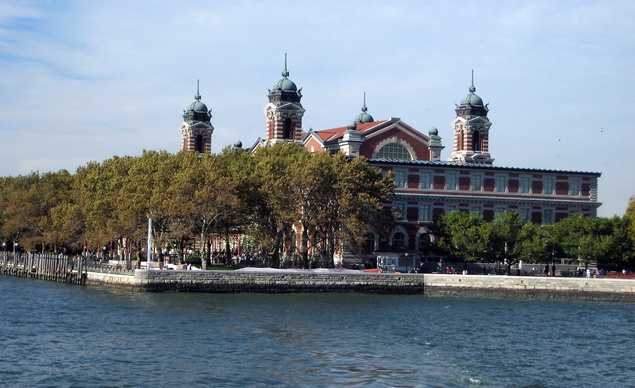
The Ellis Island Ferry shuttles visitors from Battery Park in Manhattan across the Hudson River to the Statue of Liberty and Ellis Island.
(Courtesy Dekoker/Wikimedia Commons)
Between 1892 and 1924, more than 17 million immigrants passed through Ellis Island; today, their descendants account for 40% of Americans. Go on a hunt for your ancestors at the Ellis Island Immigration Museum, where for $5 you can search through millions of records to find the exact date your relatives sailed into the Port of New York, as well as which ship they were on and whether they traveled with other family members. (Bonus: copies of the documents are yours to keep.)
And don’t miss the construction of the Peopling of America Center, which cost $20 million to build and is slated to open in 2012. The new space focuses on U.S. immigration from 1955 (when Ellis Island closed) to the present, and houses interactive multimedia exhibits, like a touch screen that reflects demographic changes in American cities over time. Ellis Island admission prices as of March 18: adults, $37.95; children, $18.95; children under 5, free. ellisisland.org
12. Yellowstone National Park – Wyoming, Montana and Idaho
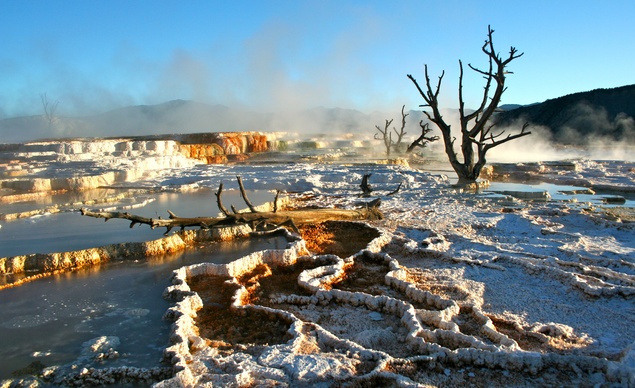
One of the breathtaking sunrise views you can catch at Yellowstone National Park.
(Courtesymmiwig/myBudgetTravel.com)
Snag a Young Scientist Toolkit stocked with magnifying glasses, rock samples, and stopwatches to time geyser eruptions at the Old Faithful Visitor Center and hit the great outdoors for some investigating. The coolest toy: an infrared-thermometer gun that takes readings of thermal pools when pointed at the water. And there’s lots of H20: The 3,472-square-mile park is home to more geothermal features (geysers, hot springs, mud spots) than any place on earth. The Young Scientist activity booklet and toolkit costs $5 (toolkit must be returned after use). Park entrance fee starts at $12. nps.gov
13. Fenway Park – Massachusetts

Not exactly the cheap seats, this is the view from the Legend’s Box at Fenway Park in Boston.
(CourtesyJared Vincent/Wikimedia Commons)
Even die-hard Yankees fans have to admit that visiting Major League Baseball’s oldest stadium is an exercise in Americanism: Babe Ruth pitched there! Ted Williams hit a 502-foot home run! Boston’s Fenway turns 100 next year, but its features are still intact. Check them out for yourself on a guided 50-minute tour, where hands-on exploration is encouraged: You can touch the Green Monster (the park’s 37-foot-tall left-field wall), peek into the dugout, poke around inside the press box, and even walk across the baseball diamond, depending on how friendly the grounds crew is feeling that day. Fenway Park tours, adults, $12; kids 3–15, $10; seniors, $11. mlb.mlb.com
14. Craters of the Moon National Monument & Preserve – Idaho

A 618-foot lava field, formed by volcanic eruptions 15,000 years ago, is the ultimate moon-surface simulation.
(Courtesy Idaho Tourism)
The National Park Service calls this Idaho preserve “the only officially weird park” in the country. And for good reason: The jagged, black landscape — formed by volcanic eruptions up to 15,000 years ago — boasts a 618-square-mile lava field, the biggest in the U.S. (The rocky surface is so moonlike that Apollo 14 astronauts trained at the site in 1969.) The park’s most awe-inspiring feature is its lava tubes, underground passageways created by hardened molten rock.
Grab a flashlight and head to Indian Tunnel, which, at 30 feet high and 50 feet wide, allows for comfortable exploring. Craving an even more intense experience? Exit the cave at the far end, a feat that requires mounting a big rock pile and squeezing through a small opening. Park entrance fee is $8 per vehicle; bike or foot entrance starts at $4; age 14 below is free. nps.gov
15. San Diego Zoo – California

A topiary elephant greets visitors at the entrance to the San Diego Zoo.
(Courtesy Cburnett/Wikimedia Commons)
With more than 4,000 rare and endangered animals representing 800-plus species and subspecies, the San Diego Zoo is one of the most diverse in America. But its coolest attraction — literally — is the Polar Bear Plunge, which reopened last March after a $1 million makeover.
Aside from permanent polar residents Kalluk, Chinook, and Tatqiq, new features include a snow den you can burrow into (the snug space mimics where female bears birth their cubs); a helicopter used on actual Arctic explorations that invites climbers into the cockpit; and the Experience Wall, where zookeepers open the glass panels surrounding the bears’ habitat, letting them sniff at visitors through wire mesh. Ages 12 and up, $40; 3–11, $30.sandiegozoo.org
Bonus: Lava.

Best Divorce Letter Ever
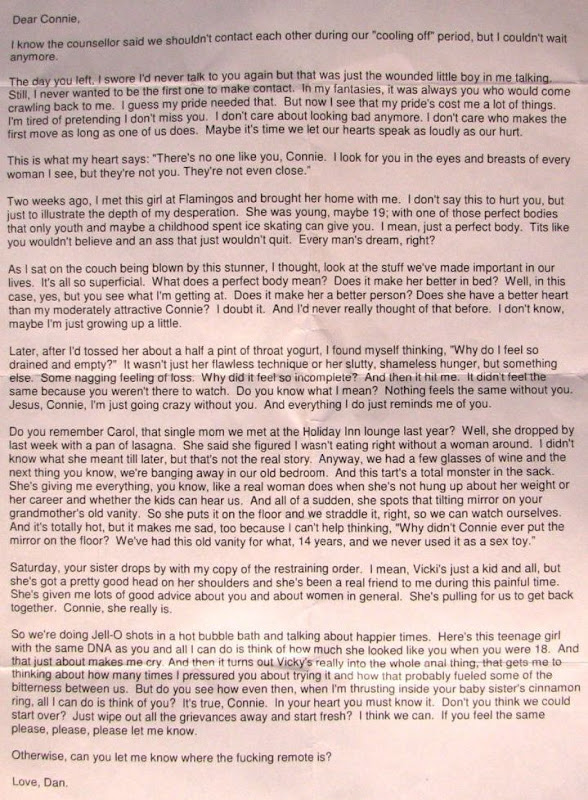
Do you think she’ll take him back?
10 Entrepreneurship Rules for Building Massive Companies
Written by Reid Hoffman
Last week I gave a talk at South by Southwest, and in it I shared my top ten rules for entrepreneurship. They are borne from my experiences starting companies and partnering with great entrepreneurs in Silicon Valley as an angel and a venture capitalist. I hope they prove to be useful to you. If you are an entrepreneur and have other rules you live by and want to share with others, please post your thoughts in the comments field.
Rule #1: Look for disruptive change.
If you’re about to start on a new venture, ask yourself: What is becoming possible or necessary that wasn’t possible before? Is a new product or service able to take over an existing market or create a new market? When I co-founded LinkedIn the tech industry was in a deep depression. I looked at all the opportunities created by the Internet and had the idea that eventually everyone would need a professional profile online. The disruption was that people were able to directly reach the best candidates rather than hoping for responses from a listing in the paper or an ad on a Web site.
Rule #2: Aim big.
Regardless of whether a start-up is targeting a big idea or a small one, it will still require the same amount of blood, sweat and tears—so aim big! What is “big?” It is a new product or service that creates or dominates a significant market.
Rule #3: Build a network to magnify your company.
People tend to think that behind every great start-up is a single entrepreneur with a whiz-bang idea. The reality is great companies are built by a number of people with talent who are surrounded by amplifying networks. The most successful entrepreneurs bring in advisors, investors, collaborators and early customer relationships.
Rule #4: Plan for good luck and bad luck.
You should always assume you will have both good luck and bad luck with your new company. Good luck is not as simple as “it worked out.” Rather, this is when you discover a great opportunity and can quickly shift to go after it. Bad luck is what happens when your first idea doesn’t work. It doesn’t mean failure; it means you need to pursue plan B.
Rule #5: Maintain flexible persistence.
Very often entrepreneurs are given conflicting advice: “Be persistent! Stay committed to your vision!” or “Pivot on key data! Know when to change!” The challenge is to follow them both, but know which advice is most appropriate for which situation. You must know how to maintain flexible persistence.
Rule #6: Launch early enough that you are embarrassed by your first product release.
With my first startup, Socialnet.com, it took us nine months to launch the first product. That was a disastrous mistake. We wanted to have all the detailed functionality right away, including social controls to people could decide to connect or not with the people in their networks. We wanted everyone to “Ooh” and “Aaah” about how terrific the product was. We wasted a bunch of time and it put us months behind on more important problems that needed to be solved, such as how to get our product in the hands of millions of people. From that I learned, if you are not embarrassed by your first release, you’ve launched too late!
Rule #7: Aspire, but don’t drink your own Kool-Aid.
Target excellence, but be very careful about blind trust or belief in your theories. It is important to launch as early as you can in order to learn how your customers use your product or service. It is equally important to identify metrics that tell you if your aspirations and vision are on target. You should also get feedback from your network in order to iterate or pivot on the target, the product and/or the service. In other words, maintain your aspiration but always look for good perspective on how you are doing. It is very easy for creative innovators to get caught up in their own story rather than learning where they should be headed.
Rule #8: Having a great product is important but having great product distribution is more important.
I meet a lot of entrepreneurs who think the best product is the most important thing and that the best product should always win. What a lot of people fail to realize is that without great distribution, the product dies. How will you get your product in the hands of millions or hundreds of millions of people?
Rule #9: Pay close attention to culture and hires from the very beginning.
Your first hires set your culture, so make them good ones. These first people hire the next people and so on. The old wisdom was that you needed people with a decade more of experience in your start-up. The things a smart person learned a decade ago won’t help you now – you’re doing things that have never been done before, and the world and the competitive landscape are changing at hyper speeds. What you really need are people who can learn fast.
Rule #10: Rules of entrepreneurship are guidelines, not laws of nature.
Do not pay too much attention to rules set by other people. Entrepreneurs are inventors. They are successful when they make something work for the very first time. Sometimes in order to make something work, you will drive over the guardrail of one of these rules. Entrepreneurs sometimes just make new rules.
Bonus: Musicians@Google Presents: Google Goes Gaga
